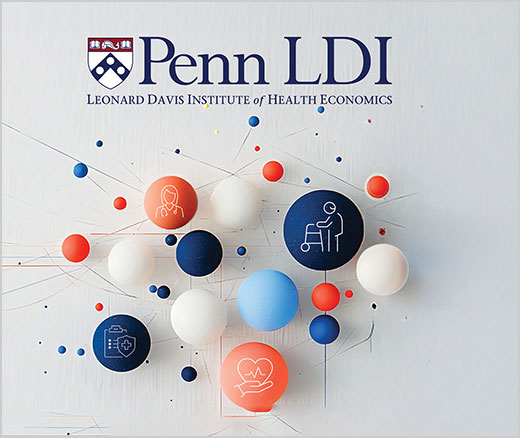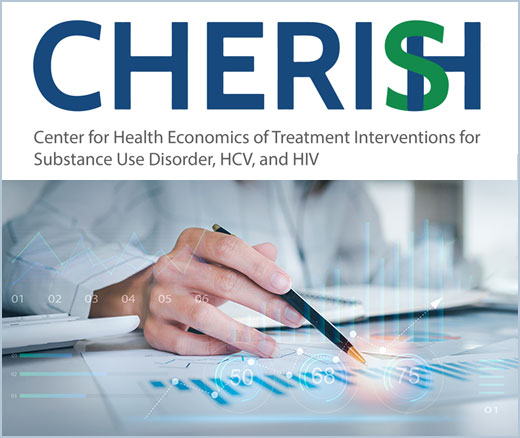
Why RFK Jr.’s Public Health Agenda Threatens Us All
Former Philadelphia Health Commissioner Warns That Gutting the CDC, Undermining Vaccines, and Politicizing Science Will Leave the U.S. Dangerously Unprepared for the Next Pandemic
News

The latest wave of health technology transformation was set in motion by the 2009 HITECH Act, which mandated and incentivized the adoption of electronic health records (EHRs). Now, those rapidly advancing systems are spawning a second revolution—evolving into massive “nudge” engines that weave human clinicians and machine intelligence together in real-time decision-making.
Rapidly emerging research is demonstrating AI large language models can perform as well or better than clinicians alone or clinicians with AI assistance in medical reasoning and decision making. This new trend raises the stark question for clinicians as to whether they should remain “in the loop,” controlling final decisions, vs. relinquishing some control with some continuous oversight. That tension was at the heart of the discussion at the 2025 Penn Medicine Nudges in Health Care Symposium on how AI can be leveraged to improve clinical decision support.
The reach of AI is already vast throughout health care, touching logistics, economics, diagnostics, and treatment. But future success, keynote speaker Adam Rodman, MD, MPH, argued, will hinge on how willing medical professionals are to share their authority with algorithms that in many domains are already proving more accurate than humans in complex decision-making.
Rodman, Associate Editor of the New England Journal of Medicine, is widely regarded as a leading voice in the AI and clinical decision support field. He directs AI programs at the Carl J. Shapiro Center for Education and Research, affiliated with Harvard Medical School and Beth Israel Deaconess Medical Center, and is a visiting researcher at Google.

Rodman challenged conventional thinking around AI in healthcare, particularly the assumption that human collaboration—or “humans in the loop”—is inherently better than systems where humans provide oversight from a distance (“humans on the loop”). He argued that human-in-the-loop models can lead to cognitive deskilling, inefficiency, and poor scalability in clinical settings. At the other extreme, fully autonomous AI systems—where humans are entirely out of the loop—raise dystopian concerns reminiscent of science fiction, and are clearly not the solution either. Instead, he advocated for a “human on the loop” approach: allowing AI to perform tasks it excels at, while humans retain supervisory control.
He acknowledged that realizing this vision comes with significant socio-technical challenges, including the absence of a robust regulatory framework and unclear payment models. Importantly, he reminded the audience that while AI is powerful, it is not magic—its success depends on thoughtful integration, oversight, and trust.
“When I ran two randomized controlled trials,” he explained, “I started getting hate mail attacks in my office because I showed again what every single researcher in this field has shown for decades, which is that just giving a human an AI system doesn’t inherently improve that human’s performance, and it doesn’t improve their performance as much as if the AI system had just run by itself. We’ve now seen this in diagnostic reasoning, management reasoning, and in breast, radiology, and chest X-ray areas. We see it in field after field.”
“Generative AI is different because it can have interactions with patients. About two years ago, Google developed a system called the Articulate Medical Intelligence Explorer (AMIE) that talks to patients,” Rodman continued. “This is an evaluation of standardized patients. What they found is that in standardized patients, when it’s blinded between doctors and the AI system, the AI system has equivalent or better diagnostic accuracy. And it’s basically rated better by the patients in every domain.”
As an example of health systems that are already using AI to interview patients and prepare a summary and initial treatment recommendations for physician review, Rodman cited the K Health system at Cedars-Sinai Los Angeles. It collects patient symptoms, asks follow-up questions, and cross-references the input with electronic health records and data from other cases.
A study published earlier this year in the Annals of Internal Medicine compared the Cedars-Sinai AI treatment recommendations against those of physicians and found that 77 percent of AI recommendations were rated as optimal, while only 67 percent of physician decisions were rated optimal.
“This is not science fiction,” said Rodman. “We are deploying these patient-facing AI systems. The performance paradox is a problem. Scalability is a problem, but the health care system is in a lot of trouble because there are a lot of sick people and not enough doctors.”
A performance paradox refers to the fact that success in developing AI components for clinical support does not guarantee improved real-world care. The complex play of system integration, compatibility, and clinician interaction is pivotal to ensuring AI achieves its potential benefits in health care settings.
One of the most famous examples of the performance paradox was the 2009 Air France 447 disaster when the pilots overruled the autopilot that was telling them to level out the Airbus A330. They kept climbing until the plane stalled and crashed into the ocean, killing everyone onboard.
“We see this over and over again,” said Rodman. “In quantitative trading, whenever the traders overrule the algorithm, they actually do worse. We’ve now seen this in chess and Go board games, sentencing support, weather forecasting, and industrial quality control.”
“One of the big challenges and worries I have is that we might end up with this really powerful technology that doesn’t make the difference that we want, because we’re not able to move from human in the loop to human on the loop,” said Rodman. “What is the biggest problem? Liability. Now, it’s all with the individual provider. There is not currently a system to shift liability. And because of that, companies are not making investments in this technology. It requires partnerships that health systems don’t really allow for a tech company now. But you cannot build a system that goes from human in the loop to human on the loop because you must deploy a human in the loop system first and then iterate to safely get it to human on the loop.
“As I said earlier, tech is remarkably powerful, but it is not magic,” said Rodman. “And just because you have a general-purpose diagnostic or measurement system that can outperform humans doesn’t mean it’s going to make anything better, because the challenges are not just technical, they’re sociotechnical. They involve the way that we deliver care. And this is something that I think the people in this symposium and this specialty are very well positioned to figure out. That’s going to take years—a decade of very, very careful and deliberate work and advocacy to make this happen knowing there is no tech miracle. There is no superintelligence hidden behind the curtain like in ‘The Wizard of Oz,’ right? In order to make this happen, we have to do the work.”
These are some other scenes from the symposium:














Former Philadelphia Health Commissioner Warns That Gutting the CDC, Undermining Vaccines, and Politicizing Science Will Leave the U.S. Dangerously Unprepared for the Next Pandemic

Some Hospice Agencies Adjusted Admissions and Discharges to Maximize Payments

New Program Launches Research Initiatives Focused on Improving Primary Care for Older Adults

Rural Parents Had More Emergency Visits and Insurance Loss Than Urban Peers, an LDI Study Shows. Integrated Baby Visits Could Help All Parents Be Healthier

Penn and Four Other Partners Focus on the Health Economics of Substance Use Disorder

Experts Say Nursing Ethics Can Help Researchers Confront Federal Disinvestment, Defend Science, and Advance Health Equity